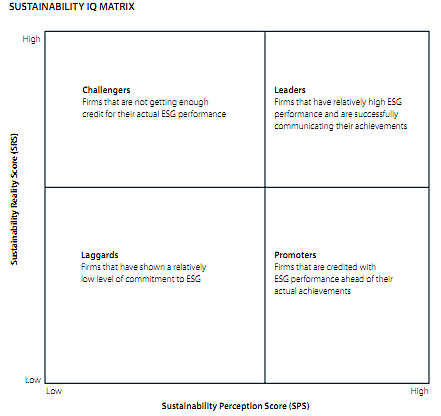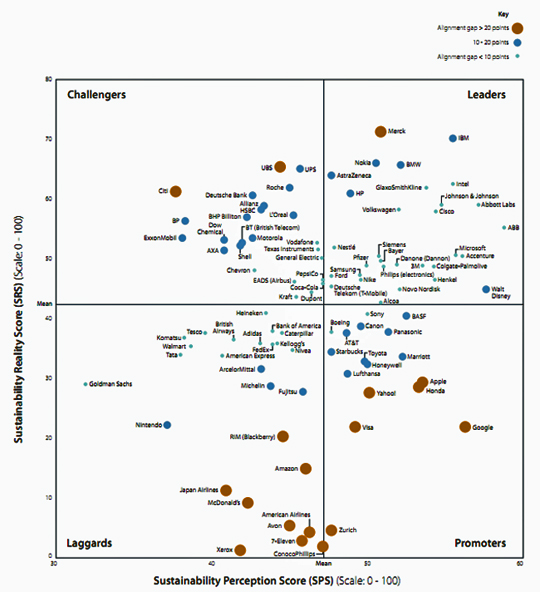 |
| Reviews and Templates for Expression We |
Google, Apple, Honda, Yahoo! and More Benefit from Green Halo

Sixty-six of 100 leading global brands enjoy a reputation for sustainability that outshines their performance, while other firms scarcely receive the recognition they deserve, a study published this week shows.
Google, Apple, Honda, Yahoo!, Visa and the insurance company Zurich were among the 17 companies whose perceived performance in environmental, social and governance matters outstrips their actual performance as gauged by consulting firm Brandlogic and CRD Analytics in research results released Tuesday at the Sustainable Brands Conference in Monterey, Calif.
In contrast, financial service company UBS of Switzerland and Citi were found to be strong ESG performers, but you'd never know that based on perceptions of the brands, according to the "Sustainability Leadership Report: Measuring Perception vs. Reality." Other companies whose reps didn't reflect the extent of their ESG performance included UPS, L'Oreal, Roche and Allianz, General Electric, PepsiCo, Coca-Cola, Dupont and Kraft also fell into the same category.
Over the years, GreenBiz.com has written about the green halo effect (here are articles by Executive Editor Joel Makower and Matthew Wheeland), which can result when a company makes such a strong positive impression in the mainstream market with an environmental product or innovation that the success burnishes the firm and its other activities. And the gaps between the perception and reality of companies' sustainability performance are an evergreen topic for the environmental media as well as research and marketing firms.
However, the study by Brandlogic and CRD Analytics is distinguished by the firms' pursuit of two in-depth research paths and their analysis of those results to create a matrix illustrating the alignment (or not) of perceived and actual performance by companies on environmental, social and governance matters. The matrix also shows how companies fare when their perception-versus-reality standings are compared to those of their global peers.
Here is matrix that resulted from the joint research and the key to the "Leaders," "Promoters," "Challengers" and "Laggards" labels follow:

To conduct its study, Brandlogic surveyed 2,400 supply chain managers, investment professionals and graduating college and university students in the United States, United Kingdom, Japan, Germany, China and India. And CRD Analytics used its technology to determine firms' actual performance based on 175 metrics related to ESG factors and five key performance indicators in each of the three ESG dimensions.
"There is still a relative lack of hard facts on how stakeholder groups judge corporations," said James Cerruti, Brandlogic's senior partner for strategy, explaining why Brandlogic and CRD embarked on their research.
The idea, Cerruti said in a media briefing on Tuesday, is to "help corporations identify sustainability risks, opportunities and investment priorities."
For example, the report said:
"Companies whose actual ESG performance is well above average and substantially exceed their perceived ESG performance may have an opportunity to secure unrealized ROI ... Those with high perception scores relative to reality may have significant value at risk if this gap persists ... Those with below-average performance on both measures may not suffer from a perception gap, but they are vulnerable to erosion of market position as competitors with more sustainable practices step into ESG leadership positions and raise the bar for acceptable performance in their category."
A summary of the research findings is available for download at www.brandlogic.com/perspectives/sustainability.html.
|
|
|
|
Copyright 2011 Energy and Technical Services Ltd. All Rights Reserved. Energyts.com |
